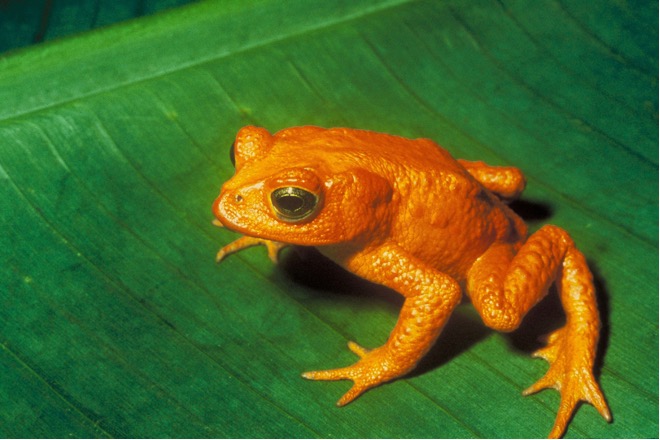Dossier Posted on 2024-07-31 11:25:47
Relevance of ecology and predictive modelling to wildlife health and biodiversity
Keywords
Authors
Molecular Epidemiology and Public Health Laboratory, School of Veterinary Science, Hopkirk Research Institute, Massey University, Palmerston North, Manawatu−Wanganui, New Zealand
The designations and denominations employed and the presentation of the material in this article do not imply the expression of any opinion whatsoever on the part of WOAH concerning the legal status of any country, territory, city or area or of its authorities, or concerning the delimitation of its frontiers and boundaries.
The views expressed in this article are solely the responsibility of the author(s). The mention of specific companies or products of manufacturers, whether or not these have been patented, does not imply that these have been endorsed or recommended by WOAH in preference to others of a similar nature that are not mentioned.
The biodiversity on Earth includes us, as well as the most beautiful birds and fascinating creatures on the planet – and the most lethal pathogens. Ecological thinking and the use of models are essential to understanding biodiversity and wildlife health, along with recognising how we can keep ourselves healthy.
Biodiversity is life; it is the variety of all Earth’s animals, plants, microorganisms and genes. Biodiversity creates the ecosystems we rely on for fresh water, climate and pest regulation and more – yet diverse microbes can cause disease in us and wildlife.
Rabies, influenza, the Ebola virus and West Nile virus are among the pathogens that find a reservoir in wildlife, from which infections can be transmitted to us or our domestic animals. These same infections also kill the wildlife they come from, including wild birds and marine and terrestrial mammals. Understanding the factors that contribute to infection spread is therefore essential for disease management. For example, wildlife trade has facilitated the spread of chytrid fungi and the decline of global amphibian populations [1] (Figure 1).
It is the complexity of these systems that means we must use models to simplify, understand and make predictions about past and future trends, based on observed and experimental data [2]. Predictive models have been used to understand the impacts of management options on wildlife diseases, such as evaluating vaccination strategies, both to protect endangered species and prevent infection from wildlife to other species. Models have also been used to evaluate how culling strategies might impact infection dynamics for diseases in threatened species and prevent their spread to other species. For example, culling has been shown through models to have a limited or even negative impact on wildlife diseases [3]. Data-driven analyses have shown this to be the case, for example, for the rabies virus in Peruvian vampire bats. Killing bats failed to reduce rabies among livestock. In fact, if used as a reactive measure, it even increased rabies spread among bat populations [4].
Models have also linked Ebola virus outbreaks among people and wildlife to the edges of forest patches in fragmented forests, as these provide opportunities for novel contacts between species, including apes [5, 6, 7]. In addition, models can predict if specific hosts can maintain infection naturally [8]. Predictive models help us to understand what potential impacts climate change might have on biodiversity and the risk of disease emergence [9, 10].
Over all, ecology and predictive modelling are essential tools to understand the complex relationships between us, wildlife, the environment, and the factors that influence both our health and wildlife health.

https://doi.org/10.20506/bull.2024.1.3499
References
- Fisher MC, TW Garner. Chytrid fungi and global amphibian declines. Nature Rev Microbiol 2020; 18(6): 332−343.
- Mancy R. et al. Rabies shows how scale of transmission can enable acute infections to persist at low prevalence. Science 2022; 376(6592): 512−516.
- Choisy M, Rohani P. Harvesting can increase severity of wildlife disease epidemics. Proc Royal Society B 2006; 273(1597): 2025−2034.
- Viana M et al. Effects of culling vampire bats on the spatial spread and spillover of rabies virus. Sci Adv 2023; 9: 7437.
- Wilkinson DA et al. Habitat fragmentation, biodiversity loss and the risk of novel infectious disease emergence. J Royal Soc Interface 2018; 15(149).
- Rulli MC et al. The nexus between forest fragmentation in Africa and Ebola virus disease outbreaks. Sci Rep 2017; 7.
- Hranac CR et al. Predicting Ebola virus disease risk and the role of African bat birthing. Epidemics 2019; 29.
- Hayman DTS et al. Transmission models indicate Ebola virus persistence in non-human primate populations is unlikely. J Royal Soc Interface 2022; 19(187): 20210638.
- Carlson CJ et al. Climate change increases cross-species viral transmission risk. Nature 2022; 607(7919): 555−562.
- Muylaert RL et al. Present and future distribution of bat hosts of sarbecoviruses: implications for conservation and public health. Proc Royal Soc B 2022; 289(1975): 20220397.








